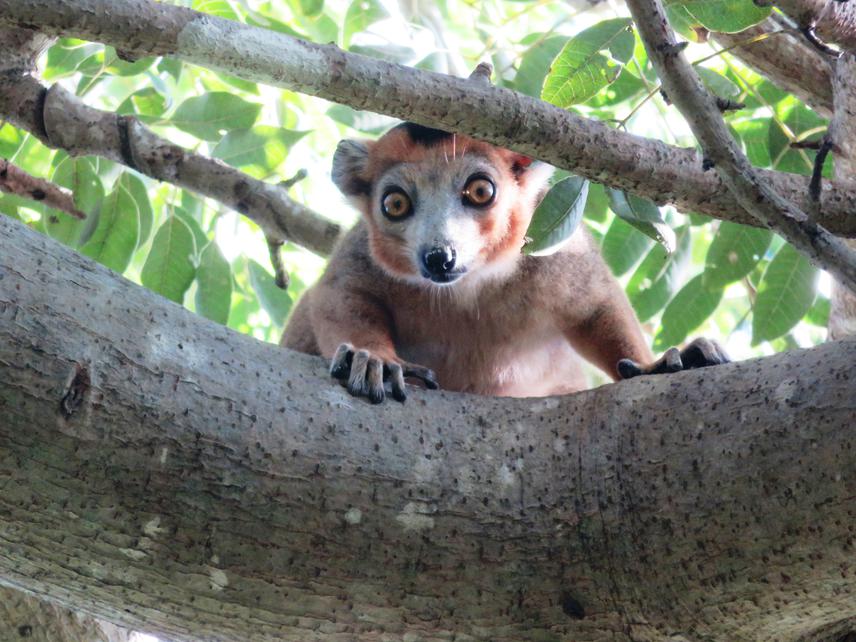Hortensia Rasoanandrasana
Other projects
30 Jan 2013
Enhancing Community-Managed Conservation and Ecotourism in Bobaomby Area, the North Tip of Madagascar I
10 Sep 2014
Enhancing Community-Managed Conservation and Ecotourism in Bobaomby Area, the North Tip of Madagascar II
This project aims to protect Biodiversity richness of Anjiabe and Ampombofofo, and to promote the area as a new Ecotourism destination in the northern part of Madagascar in order to provide alternative source of income to the local communities.

Eulemur coronatus.
The project site is located in the eastern dry forest and coastal forest of the village of Anjiabe and Ampombofofo (approximately 12km north-east of the coastal village of Ambanililana Hely from which we will access the region by boat), in the Bobaomby area, the province of Antsiranana, the northern tip of Madagascar.
The site is habitat of species including 63 bird species, 39 reptile species (including sea turtles Chelonia mydas), 10 amphibian species, seven mammal species (including large troops of crowned lemurs) and fruit bats (Pteropus rufus), and 31 butterfly species. Among these 63 species of bird, 32 species are either endemic to Madagascar or endemic to Indian Ocean region. This great endemicity is an opportunity for the site to be a tourist attraction. Some of them are classified as least Concern in IUCN red list but some are classified as endangered such as Madagascar squacco heron (Ardeola idae) and Vulnerable such Madagascar pratincole (Glareola ocularis) (Frontier Madagascar 2007).
The site is among the rare place which composed both forest and marine and where visitors will appreciate semi-humid dry deciduous forest, littoral forest, Mangrove forest, and Beaches in one destination and this project is an ongoing efforts at establishing a Community–Managed Conservation and Ecotourism project so that objectives are focusing on:
1)The Development of ecotourism infrastructure (the construction of the information centre, lodge, sign board at the entry and the picnic shelter along the beach
2) Biological and socio-ecological study of flagship species such Crowned Lemur where Transect, observation, counting and GIS method will be taken to record distribution and habitat requirement. The suspicious threats and pressures (human activities, predator) will be listed and evaluated along each transect and the socio-ecological study of crowned lemurs will gather a semi-structured interview to local inhabitants regarding their traditional knowledge of crowned lemur behaviour and ecology
3) Development and reinforcement of Environmental education program by various environmental awareness and extension programs including campaigns, an education mobile with youth/students, and audio/visual programs, distribution of posters, t-shirts, use of Standing banners, session of short Documentaries on Environment in Malagasy language version, etc.
4) Workshop on tour planning and budgeting, first aid, catering services, financial management, nature conservation, communication and language skills and Development of alternative source of income by training villagers on Agriculture production.